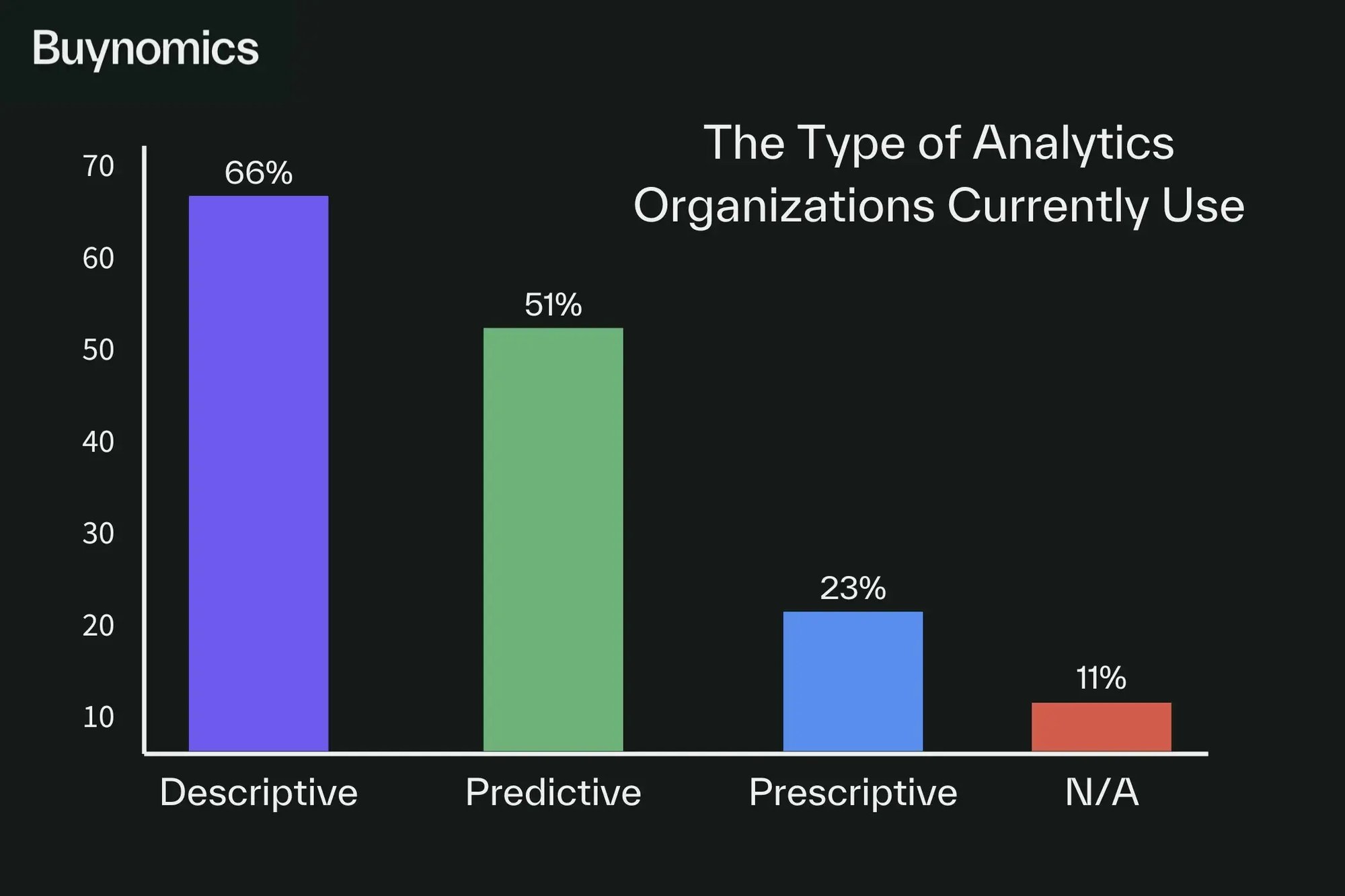AI Pricing Tools Compared: Find the Best Solution for Your Pricing Strategy
Introduction to AI in Pricing
Artificial Intelligence (AI) is reshaping business strategies across sectors, from customer service to marketing to pricing. As such, AI in pricing has evolved the tools companies use beyond traditional approaches.
So, what do AI-powered pricing tools do differently? They continuously analyze data for market and shopper behavior trends to help businesses make better pricing decisions that optimize relevant KPIs (e.g., revenue, profit) and align with customer expectations. Yet, still, only a few of those AI tools consider all five Revenue Growth Management (RGM) levers (pricing, price pack architecture, promotions, portfolio mix, and trade terms) holistically, offering an understanding of how one lever may affect the others.
In this guide, we’ll walk you through the key criteria for evaluating AI pricing tools so you can make the right choice for your business’ AI transformation.
The Need for AI Tools in Pricing
Challenges with Traditional Pricing Methods
Traditional pricing methods, though still used, are often too limited for today’s fast-paced markets. They typically rely on manual processes and human expertise. Here are some standard pricing methods companies use to solve some of their pricing questions and the challenges associated:
- Spreadsheets: Tools like Excel are often used for basic pricing and descriptive data analysis. However, they are prone to human error, lack integrations, and cannot handle complex interdependent pricing scenarios or predict holistically optimal strategies.
Exemplary pricing model in Excel.
- Conjoint Studies: Conjoint studies can offer deep insights into consumer preferences, yet they typically have a long setup time, can lack flexibility, and require high costs to update. They are often used for market studies, which, while valuable, are typically project-based, time-intensive, and challenging to scale — making them challenging to quickly adapt to dynamic markets.
Benefits of AI Pricing Tools Over Traditional Methods
AI pricing tools close these gaps, providing the speed, accuracy, scalability, and prescriptive insights that traditional methods lack. They consider more options and make better decisions than a human could by analyzing data in real time to anticipate demand shifts, optimize prices, and suggest specific actions.
As a result of these advanced capabilities, AI pricing tools generate a range of outputs, from predictive modeling to prescriptive guidance.
- Predictive Modeling: AI tools analyze historical data to forecast future demand and determine optimal pricing strategies, allowing businesses to anticipate changes and quickly adjust prices when needed.
- Prescriptive Guidance: Beyond prediction, some AI tools (like Buynomics’ Decision Guide) provide prescriptive insights that guide businesses in taking specific actions based on the modeling of their shopper behavior.

In Buynomics' webinar "From Descriptive to Prescriptive Analytics in RGM," only 23% of participants reported that their organization is using prescriptive analytics.
Watch the full webinar
Top Features to Look for in AI Pricing Tools
Choosing an AI pricing tool requires identifying the features that align with your company’s goals. Below are the essential criteria to consider:
Effectiveness in Achieving Goals
Holistic Solution
Opt for tools that can support multiple, ideally all five, RGM levers. A holistic solution integrates various aspects of RGM into a cohesive framework and can provide a comprehensive understanding of market reactions, competitive dynamics, and shopper preferences.
Predictive and Prescriptive Capabilities
Effective AI pricing tools don’t just predict market trends and consumer behavior; they provide actionable recommendations for maximizing growth. Look for solutions that leverage predictive insights AND offer prescriptive guidance on pricing actions, enabling your team to make data-backed decisions.
High Accuracy
The best AI pricing tools will leverage robust data sources and advanced algorithms to achieve high accuracy in predictions and recommendations, ensuring that pricing decisions are based on reliable information.
Shopper Behavior Modeling
Tools that incorporate behavioral modeling can simulate how shoppers will react to price changes, providing insights into purchasing patterns and preferences. This enables companies to make informed pricing adjustments that resonate with their target market to drive higher engagement and customer satisfaction.
Ease of Implementation and Use
Accessibility
Tools that offer easy access to data and insights enable teams and decision-makers to work with the latest information and adjust prices accordingly. The availability of relevant data on demand ensures that pricing strategies can keep pace with rapid changes in the market.
Speed to Insights
Setup and implementation speed are key so your team can access insights quickly. Where conjoint studies or consultancy projects might take months or even years, tools that integrate quickly and minimize the need for extensive training allow companies to move from adoption to application with minimal disruption.
Scalability
Lastly, scalability and flexibility are essential qualities. The best tools are designed to seamlessly grow with business needs, enabling organizations to handle increasing data volumes and expanding use cases while supporting both short-term tactical decisions and long-term strategic planning. Additionally, they can scale across the organization, allowing previously disjointed teams to speak the same language and evaluate the same metrics.
AI Pricing Tool Comparison: Which Tool Fits Your Needs?
When we look at the two broader sections above, we can understand how some pricing tools compare to others according to their features. With a variety of B2B AI pricing tools available, the shift from manual methods to AI-driven solutions has significantly elevated the pricing landscape.
How can you decide which of these tools best fits your needs? To help you make an informed choice, let’s explore the five major categories of AI pricing tools. Once you identify the ideal category, you can compare specific tools within that category using the criteria outlined above.
Dynamic Pricing Tools
Dynamic pricing tools offer a real-time adjustment of prices based on factors like demand fluctuations, competitor pricing, and market trends. They are primarily reactive to competitor movements and demand shifts, adjusting prices as needed to maximize revenue.
Target Industries: eCommerce, retail, travel, and hospitality
Examples: Intelligence Node, Omnia Retail, Competera
Promotional and Markdown Optimization Tools
Promotional and markdown optimization tools focus on determining the optimal timing and depth of discounts, markdowns, and promotions to manage inventory or drive short-term sales. They are best suited for seasonal and promotional pricing needs, enabling companies to adjust prices based on inventory levels or sales events.
Target Industries: Retail, CPG, and eCommerce
Examples: Revionics, Clear Demand, Retalon
Competitor Price Monitoring Solutions
Competitor price monitoring solutions are platforms that monitor competitors’ pricing and inventory in real time and provide actionable alerts, often with options for automated price adjustments. They are focused on competitor awareness and reactivity, primarily to support price matching, competitive positioning, and minimum advertised price (MAP) enforcement.
Target Industries: eCommerce and retail
Examples: Prisync, Pricefy, Price2Spy
Demand Forecasting and Price Optimization Tools
Demand forecasting and price optimization tools predict demand and optimize pricing based on historical data, market trends, and economic indicators to inform inventory management and price setting. They are strong in predictive analysis for demand and price elasticity but primarily focused on simplified volume forecasting rather than exercising truly complex behavioral modeling.
Target Industries: Manufacturers, wholesale, and supply chain
Examples: Blue Yonder, Zilliant, RELEX Solutions.
Holistic Revenue Growth Management
Holistic Revenue Growth Management (RGM) is a comprehensive approach to pricing that integrates multiple RGM levers (price, price pack architecture, promotion, portfolio mix, and trade terms) to consider the interconnected impacts of each lever.
This solution, trained on historical data, combines a deep understanding of shopper behavior, market trends, and economic indicators with predictive and prescriptive modeling to enable the optimization of pricing strategies, promotions, portfolio configurations, and more for data-driven decision-making. Implementing a holistic RGM solution is a significant step in achieving RGM maturity.
Target Industries: CPG, Telecommunications, and other shopper-focused industries
Example: Buynomics
Key Differentiator: Buynomics is the leading platform for holistic optimization across all RGM levers, providing predictive and prescriptive insights that empower brands to make faster, more profitable, and customer-focused decisions. Integrating multiple data sources with cutting-edge AI delivers actionable insights that extend beyond pricing strategies to help businesses boost gross profits by 2%-4% and reduce decision-making time by up to 80%.
The Future of AI in Pricing
The trend is clear: AI in pricing is steering businesses away from reactive, competitor-focused models toward proactive, shopper-centric solutions that drive sustainable growth. Companies that implement AI pricing tools, especially holistic Revenue Growth Management solutions, are on the road to RGM maturity.
Reaching full RGM maturity begins with understanding where your business stands today. Our RGM Maturity Assessment provides a customized report comparing your performance to that of your peers and offers practical next steps.
Advanced AI tools are no longer limited to historical data analysis; they now anticipate shopper behavior with predictive and prescriptive insights. Platforms like Buynomics exemplify this shift, combining deep behavioral insights with adaptive pricing strategies that support both short-term adjustments and long-term planning.
As AI technology advances, companies that embrace this comprehensive, data-driven shift are positioning themselves for success in rapidly changing markets. They are leveraging AI to optimize prices while also aligning their RGM with evolving customer expectations and market dynamics.
20% Uplift in Unit Sales
Combining Pricing and Promotion Strategy Changes
By simulating different pricing and promotion scenarios, a leading food and beverage company identified a strategy that led to a 20% increase in unit sales during the first three weeks.
Read the full case study
Take the Next Step
AI pricing software is reshaping how companies approach pricing strategies, moving from manual methods to AI-powered insights.
Buynomics stands out by focusing on shopper behavior and prescriptive capabilities, offering businesses a holistic solution that enhances both short-term and long-term pricing success. For companies seeking to align their pricing with shopper behavior and market dynamics, Buynomics represents the future of pricing with AI.
Buynomics can help you unlock the full potential of AI-powered pricing insights and position your organization for lasting revenue success. Talk to our team to see how Buynomics can take your pricing to the next level.

November 21, 2024
.webp?width=736&height=414&name=Buynomics_SRI_16-12-22_V%201-04%20(2).webp)


